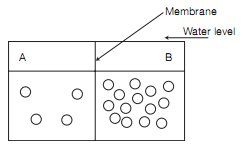Each neutron and proton in an atom’s nucleus has the same atomic mass: one dalton. If an atom loses neutrons due to radioactive decay, it may also lose protons, in which case, the atom becomes an atom of a different element. Uranium 238, a very unstable element, goes through many stages of radioactive decay. During this process, it becomes thorium, radium, and radon (among other elements), before finally becoming lead 206, a stable isotope of lead.
What can you infer from the information?
Explanation
Each neutron and proton in a nucleus has the same mass. Thus, if an atom of one element loses protons through radioactive decay, it becomes lighter. Since uranium decays to become radon, it must be heavier than radium—and, conversely, radium must be lighter than uranium.
Visit our website for other GED topics now!





